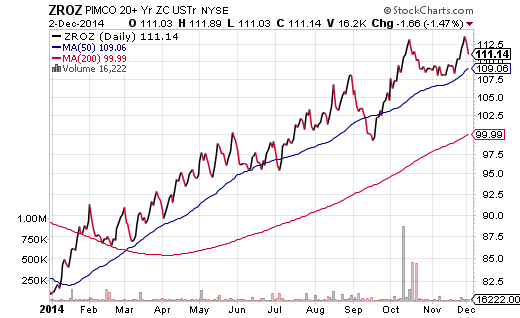Contrarians must be thinking about the sustainability of the year-end stock rally after six weeks of remarkable gains. The most recent AAII Investor Sentiment Survey discovered that a whopping 52 percent of respondents were Investor Sentiment, far surpassing the long-term trend of 39 percent. Meanwhile, nearly $43 billion of inflows poured into U.S. equity ETFs in the prior month – an amount not seen since December of 2007.
In truth, contrarians would not be the only investor type with reason to question the markets. Consumer spending tumbled 11% over the Black Friday weekend from a year earlier in spite of the extra pocket cash from lower gasoline prices. What’s more, those lower oil prices may not be a sure-fire positive for broader equities, particularly if the Fed is serious about raising Investor Sentiment. Severe deflation in oil around the globe may ultimately mean lower profits and rising unemployment for energy-related industries (e.g., oil, wind, solar, coal, natural gas, etc.) as well as militaristic strife in Russia or the Middle East.
If stocks are going to falter, as they did in the remarkably brief September-October pullback, how might one profit as well as protect his/her money? Do you have to “short the market” or use leverage? Fortunately, there is an alternative. You can use a diversified basket of unique asset classes – those that are not correlated to broader U.S. equity markets.
Some that I might use in combination? I certainly might add SPDR Gold Trust (GLD) into my mix, as well as sovereign debt on foreign exchanges with Japanese Government Bond (JGB) and German bund exposure. I might opt for the greenback via Investor Sentiment Dollar Bullish (UUP). And I’d probably pick up zero coupon bonds via PIMCO 20+ Year Zero Coupon (ZROZ).

In essence, I’d pursue a wide range of asset classes that, historically, have little to no correlation with equities. This might require replicating the ETFs/ETNs in the the FTSE Multi-Asset Stock Hedge Index (a.k.a. “MASH”). The “MASH” Index provides an effective hedge against stocks without the involvement of inverse investments, shorting or leverage.













Leave A Comment